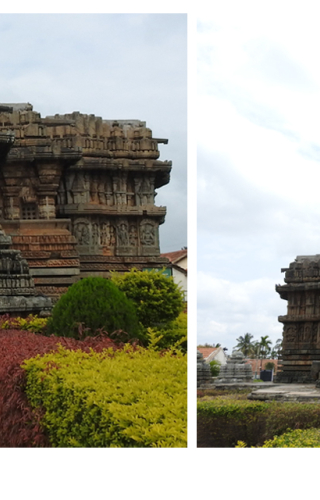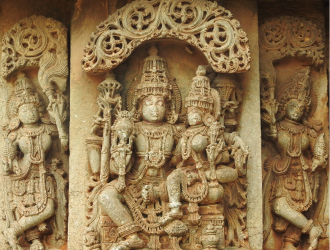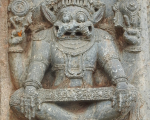Lakshmi-Narasimha temple, situated in the Harnahalli village of the Hassan district in South Karnataka, is a quintessential specimen of the Hoysala style of architecture. It proudly displays all the classic characteristics that can be seen in standard Hoysala temples. It is a trikuta (having three sanctums) temple enshrining three forms of Vishnu—Keshava, Venugopala and Lakshmi-Narasimha.
Lakshmi-Narasimha temple’s iconographic scheme exhibits the dominance of Vaishnavism in the sculptures in and around the temple. This photo gallery documents the twenty-four (chaturvimshati) forms of Vishnu, along with their respective consorts, Adimurti of Vishnu, episodes of Vishnu from Harivamshapurana like Kaliyamardana and Govardhanadhari, Vishnu-Lakshmi panels with their attendants, and incarnations of Vishnu like Varaha, Narasimha, Trivikrama, Rama, Parashurama, and Hayagriva which are seen on the outer walls of the temple.
Apart from Vaishnava imagery, dancing sculptures of goddesses like Chamunda, Saraswati, Durga and two images of Mahishasuramardini are also visible on the outer walls of the temple, and so are gods such as Brahma, Ganapati, Harihara and Bhairava. A scene from Mahabharata showing Arjuna in a swayamvara (a ceremony through which a woman chooses her husband) is seen amongst the sculptures on the pradakshinapatha (circumambulatory path) of the temple.
The distinctive features of the Hoysala style with an emphasis on structural decoration such as star-shaped ground plan, ornate and exuberant pillars, and embellishment of external jangha (wall-frieze) can be observed in Lakshmi-Narasimha temple. Even though outer sculptures of the temples are somewhat mutilated, their grandeur can still be gauged from the minute carving of each element.














